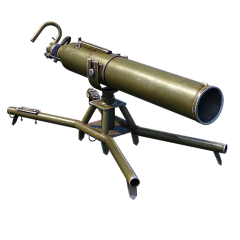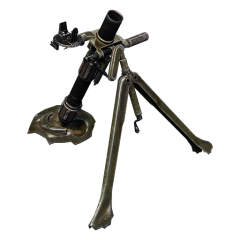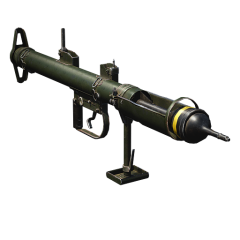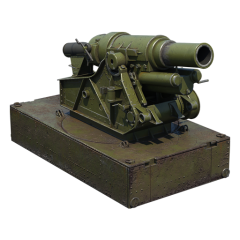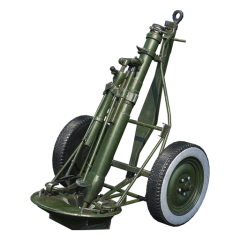Difference between revisions of "Mortars"
m (Edits) |
Jareel_Skaj (talk | contribs) m (→Naval Mortars: Updated the name of the Guiraud 100kg depth charge) |
||
| (One intermediate revision by the same user not shown) | |||
| Line 40: | Line 40: | ||
|| 20 | || 20 | ||
|| 45 | || 45 | ||
| + | |- | ||
| + | | [[File:USA flag.png|40px|link=]] || style="text-align: left;" | [[Mk.4 depth charge]] || Lateral || [[File:Mods depth charge.png|25px|link=|Depth charge]] | ||
| + | || 108.1 | ||
| + | || 6 | ||
| + | || 5 | ||
| + | || 1 | ||
| + | || ? | ||
| + | | colspan="2" | - | ||
|- | |- | ||
| [[File:USA flag.png|40px|link=]] || style="text-align: left;" | [[Mk.6 mortar depth charge]] || Lateral || [[File:Mods depth charge.png|25px|link=|Depth charge]] | | [[File:USA flag.png|40px|link=]] || style="text-align: left;" | [[Mk.6 mortar depth charge]] || Lateral || [[File:Mods depth charge.png|25px|link=|Depth charge]] | ||
| Line 173: | Line 181: | ||
| colspan="2" | - | | colspan="2" | - | ||
|- | |- | ||
| − | | [[File:France flag.png|40px|link=]] || style="text-align: left;" | [[Guiraud depth charge]] || Lateral || [[File:Mods depth charge.png|25px|link=|Depth charge]] | + | | [[File:France flag.png|40px|link=]] || style="text-align: left;" | [[Guiraud 100kg depth charge]] || Lateral || [[File:Mods depth charge.png|25px|link=|Depth charge]] |
|| 130 | || 130 | ||
|| 6 | || 6 | ||
Latest revision as of 21:04, 25 October 2024
A mortar is a type of smoothbore cannon that exclusively uses high-angle plunging fire. It is designed for indirect fire, with projectiles, technically known as bombs, that drop onto targets from above. Mortars are typically smaller, lighter weapon systems with a shorter range compared to other cannons.
Compared to howitzers, mortars have a shorter range, lack the ability to fire at a shallow angle, are generally lighter, and have smoothbore rather than rifled barrels. In contrast to cannons, mortars are solely indirect fire weapons, cannot shoot at a shallow angle, have less range, and take much longer to reach their targets, making them less effective against mobile targets.
Unlike rockets, mortars do not have an internal propulsion system. Instead, they use a propellant charge that deflagrates, creating high-pressure gases that push the bomb out of the mortar. However, there is one notable exception to this rule—rocket mortars. Particularly common during World War II, these mortars used rockets as ammunition, could be fired at shallower angles, and, in some cases, had rifled barrels, breaking with all the typical conventions of mortars.
Contents
General Info
Naval mortars were introduced into the game with the initial release of naval forces in patch Update 1.83 "Masters of the Sea". This update included various types of mortars, such as the Y-gun Mk.VII depth charge and mortar-launched WBG depth charges.
Mortars mounted on ground vehicles made their first appearance with the introduction of the Matilda Hedgehog in Update "New Power".
Usage of mortars in-game
Mortars offer a significant advantage in their ability to deliver large explosives on targets that are out of the line of sight. However, the high arc of fire comes with several drawbacks, making mortars highly situational. They require the target to be in an optimal position, demand significant lead time against moving targets, and rely on some luck, as mortars have spread and can be easily avoided by manoeuvring.
Mortars typically have only one type of ammunition available, which is usually either an impact high-explosive or a depth charge.
In naval battles, mortars are not affected by the "Highlight projectile fall point," "Highlight targeting point," or "Play buzzer sound when projectile hits the water" settings. There are no interface elements to assist in aiming.
In ground battles, the behaviour of mortars depends on the platform. The Matilda Hedgehog provides a text indicator showing the range at which rockets will land, such as "Hedgehog Rockets - 220m," but no other aiming assists are available. In contrast, the Churchill AVRE Petard allows players to control impact points using the "Sight distance control" hotkeys.
| Mortar | Direction | Projectile | TNT equivalent (kg) |
Rate of Fire (Rounds/Min) | Ammo Capacity[n 1] | Belt Capacity[n 2] | Maximum range (km)[n 3] |
Targeting speed (°/s)[n 4] | ||
|---|---|---|---|---|---|---|---|---|---|---|
| Horizontal | Vertical | |||||||||
| |
Mk 2 mortar | Trainable | |
0.77 | 18 | 8 | 1 | 5 | 20 | 45 |
| |
Mk.4 depth charge | Lateral | |
108.1 | 6 | 5 | 1 | ? | - | |
| |
Mk.6 mortar depth charge | Lateral | |
136 | 6 | 1 | 1 | ? | - | |
| |
K-gun Mk.9 depth charge | Lateral | |
136 | 6 | 4 | 1 | ? | - | |
| |
WBG depth charge | Lateral | |
100 | 6 | 1 | 1 | ? | - | |
| |
RBM mortar | Ahead-throwing | |
70.8 | 102 | 16 | 4 | 0.25 | - | |
| |
BB-1 depth charge | Lateral | |
130 | 6 | 12 | 1 | ? | - | |
| |
BM-37 mortar | Trainable | |
0.4 | 30 | 50 | 1 | ? | 30 | - |
| |
Mk.VII depth charge | Lateral | |
130 | 6 | 1 | 1 | ? | - | |
| |
Y-gun Mk.VII depth charge | Lateral | |
130 | 6 | 1 | 1 | ? | - | |
| |
Mk.10 Hedgehog mortar | Ahead-throwing | |
25.44 | 480 | 24 | 24 | ? | - | |
| |
Limbo mortar | Trainable | |
108.1 | 120 | 51 | 1 [n 5] | ? | 65 | 65 |
| |
Ordnance ML 4.2-inch mortar | Trainable | |
2 | 15 | 110 | 1 | ? | 26 | - |
| |
Type 95 depth charge | Lateral | |
100 | 6 | 4 | 1 | ? | - | |
| |
BAS depth charge | Trainable | |
112 | 180 | 60 | 1 | 0.85 | 21 | - |
| |
BAS depth charge | Lateral | |
112 | 180 | 4 | 4 | 0.3 | - | |
| |
B TG depth charge | Lateral | |
50 | 6 | 1 | 1 | ? | - | |
| |
B TG 100 depth charge | Lateral | |
100 | 6 | 1 | 1 | ? | - | |
| |
Guiraud 100kg depth charge | Lateral | |
130 | 6 | 4 | 1 | ? | - | |
- ↑ Ammo capacity can vary depending on the vessel - value provided is the most commonly found. Ammo capacity is a total amount of ammunition available - both: loaded into the mortar and in the ammo racks.
- ↑ Belt capacity can vary depending on the vessel - value provided is the most commonly found. Belt capacity is the actual amount of rounds loaded into the mortar. Once used, the remaining supply from the ammo racks will be used, if available. Reloading from the ammo rack will be slower than the Rate of Fire.
- ↑ A question mark in a field means that the value wasn't measured in-game yet.
- ↑ If the weapon has only a horizontal Targeting speed, but no vertical - it means that the weapon has a fixed firing range (equal to the Maximum range), even if the in-game interface does show a (non-existent) vertical targeting speed.
- ↑ Each Limbo mortar has 3 barrels which are loaded simultaneously. So, while belt capacity in theory is 1 bomb, effectively it's 3.
Vehicle-mounted Mortars
| Mortar | Direction | Projectile | TNT equivalent (kg) |
Rate of Fire (Rounds/Min) | Ammo Capacity | Belt capacity | Maximum range (km) |
Targeting speed (°/s) | ||
|---|---|---|---|---|---|---|---|---|---|---|
| Horizontal | Vertical | |||||||||
| |
RW61 (380 mm) | Trainable | |
125 | 1.15 | 14 | 1 | 3.6 | 8.8 | 5.5 |
| |
Petard (230 mm) | Trainable | |
17.73 | 2.31 | 16 | 1 | 0.15 | 19 | 12 |
| |
Mk.10 Hedgehog mortar | Ahead-throwing | |
25.28 | 2.56 | 7 | 7 | 0.22 | - [g 1] | |
- ↑ Hedgehog cannot be aimed, even though the interface and x-ray view suggest the ability to aim it vertically.
Decorations
In addition to the weapons, a number of mortar decorations were awarded. These have no active use in game, they are purely cosmetic items which can be placed on the vehicles.
Army
"Ampulomet" awarded in Victory in Stalingrad Day event
"RM-40" awarded in Battle of the Caucasus event
"PIAT" awarded in The Dragon Box event
Bluewater fleet
"Siege mortar" awarded in Battle Pass: Season VI, "Firepower"
Coastal fleet
"120-PM-38" awarded in Victory Day in War Thunder event
See also
External links
- [Wikipedia] Mortar
- [Britannica] Mortar
- [Missile Defense Advocacy Alliance] Rocket and Mortar Basics
- Guns, Mortars, & Rockets by M. P. Manson (pages 37-56)


